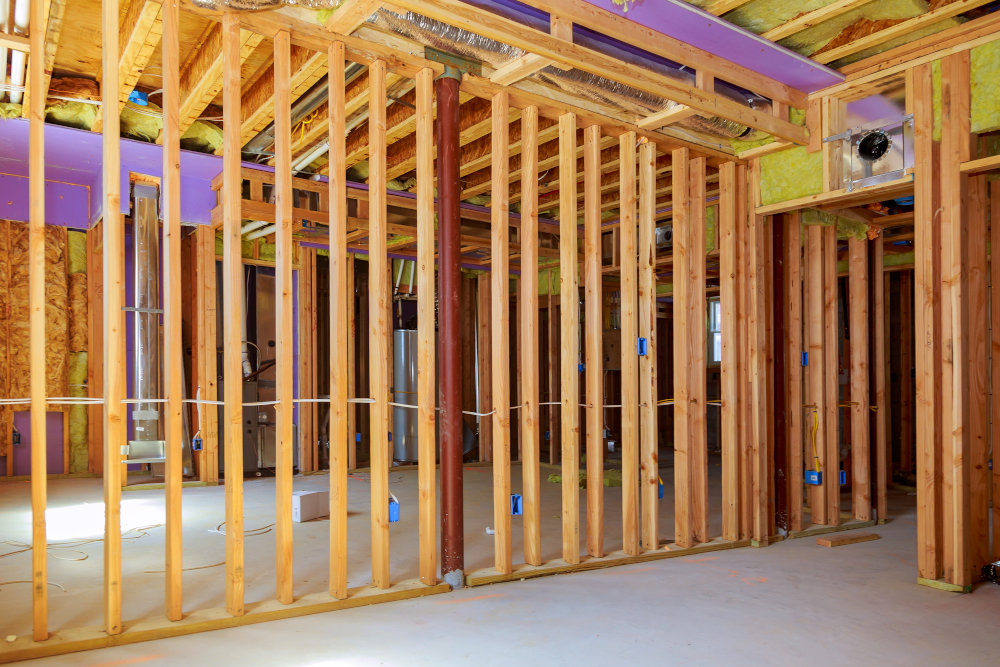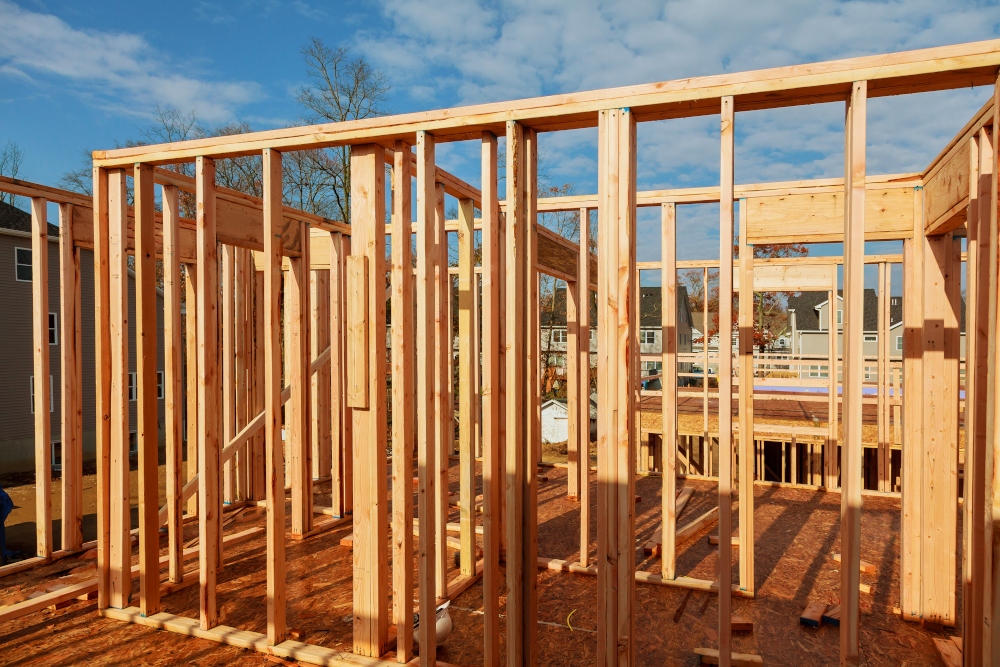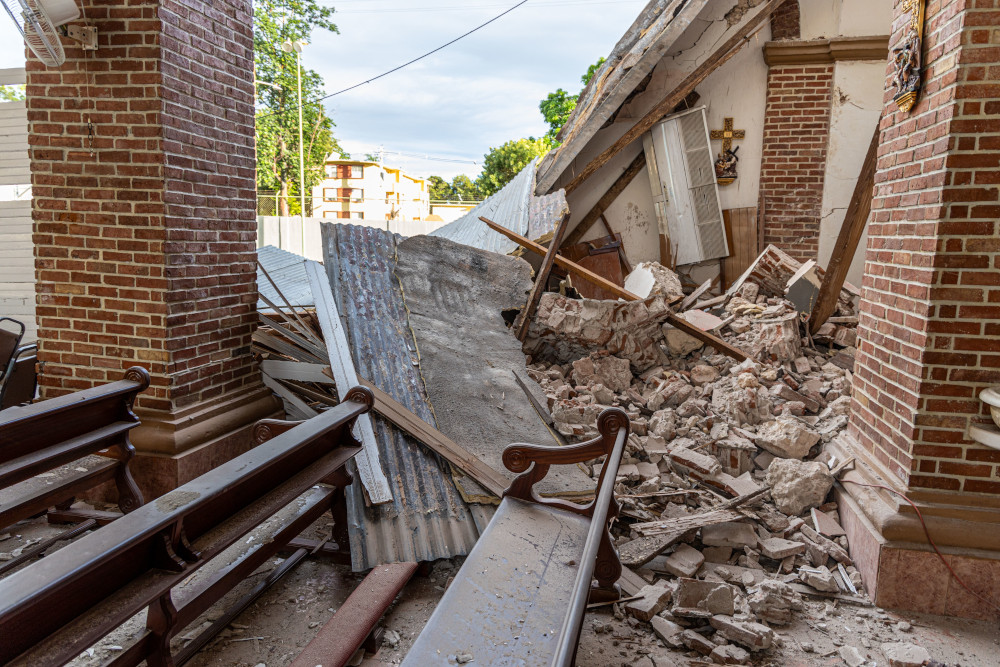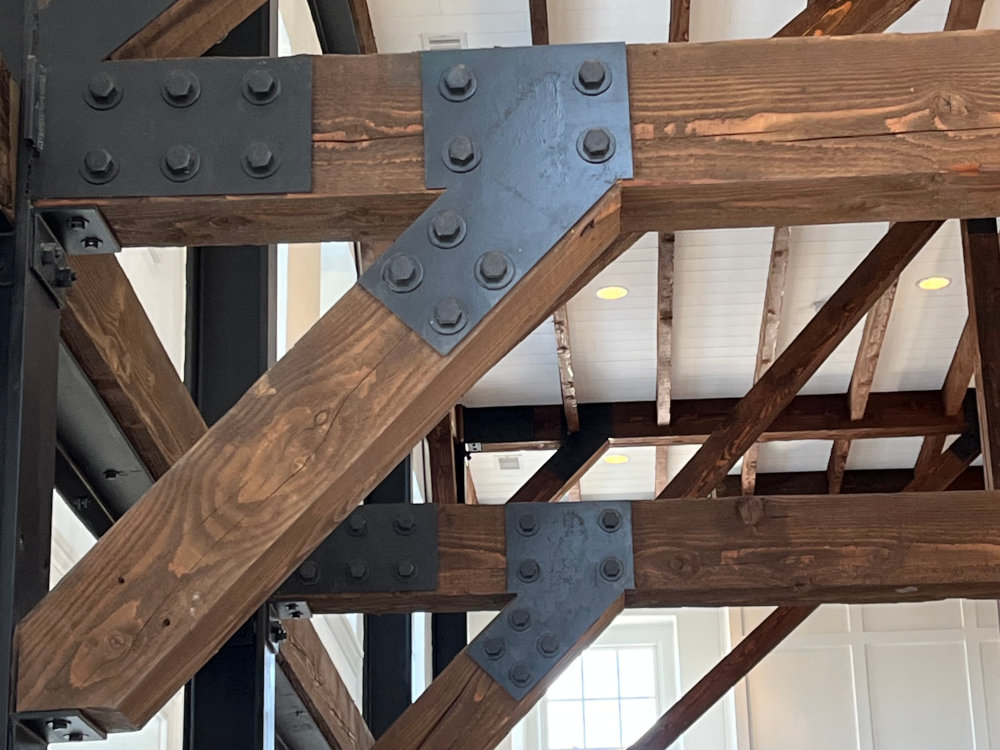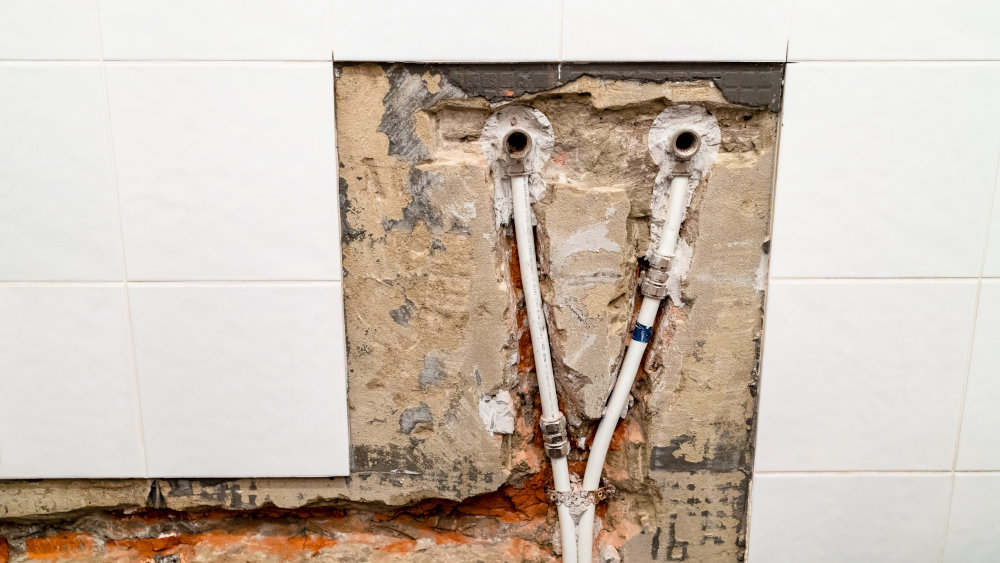Wall studs are vertical framing members in wood construction that provide support for walls, carry vertical loads from the roof and floors, and resist lateral forces. These components are essential to the structural integrity of a building, forming the skeleton of walls onto which sheathing, drywall, and other materials are attached. Standard wall studs are spaced evenly, typically 16 or 24 inches on center (typically matching the spacing of the floor and roof framing), creating a uniform framework for load distribution.
Purpose of Wall Studs
The primary purpose of wall studs is to:
- Support Vertical Loads: Wall studs transfer weight from the roof and upper stories to the foundation.
- Provide Lateral Stability: Studs support the wall against lateral forces pushing straight on it, while the wall sheathing handles lateral forces along the wall.
- Support Finishes: They provide a framework for installing interior and exterior wall finishes, such as drywall, insulation, and siding.
Wall studs are fundamental to both structural and aesthetic aspects of a building, ensuring that walls are stable, functional, and ready for finishing.
Benefits of Using Wall Studs
- Structural Versatility: Wall studs can accommodate various design needs, from simple single-story homes to complex multi-story buildings. They are easy to cut and adjust in the field as needed.
- Ease of Installation: With standardized sizes and spacing, wall studs are straightforward to work with, reducing labor time and cost.
- Compatibility: Studs work well with insulation and electrical installations, allowing for easy integration of utilities.
- Cost-Effective Materials: Wood studs are widely available and cost-efficient compared to other framing systems.
Costs of Wall Studs
The cost of wall studs depends on the type of wood, length, and grade. Standard-grade lumber studs typically cost $3 to $8 per stud, while higher-grade options or treated lumber may be more expensive. For a 1,000-square-foot home, material costs for wall studs could range between $1,500 and $3,000, excluding labor.
Investing in higher-quality studs may increase initial costs but offers long-term benefits in terms of durability and structural integrity. Sometimes higher quality studs are required for structure integrity and/or to ensure they are actually straight.
Alternatives to Wall Studs
While wall studs are the standard in wood framing, alternatives may be considered depending on the project’s design and requirements:
- Cold-form Steel Studs: Often used in commercial construction, steel studs are lightweight, fire-resistant, and less susceptible to warping or pests. Sometimes, they are required per the fire code.
- Structural Insulated Panels (SIPs): Prefabricated panels that combine framing, insulation, and sheathing into a single unit, reducing construction time. However, they require longer lead time to arrive on site and have little to no adjustability in the field.
- Post-and-Beam Construction: Uses larger vertical posts and horizontal beams, eliminating the need for closely spaced studs. Stud walls are still built to enclose the building, but they do little to no structural work.
- Concrete or Masonry Walls: Common in industrial and some residential designs, these materials provide robust structural and thermal properties but require specialized labor and have higher cost of material.
Other Considerations
When selecting and installing wall studs, the following factors should be addressed:
- Building Codes: Ensure compliance with local codes regarding stud spacing, load-bearing requirements, and material specifications.
- Moisture Resistance: In areas with high humidity, consider treated lumber or moisture-resistant barriers to prevent rot and decay.
- Spacing: Proper stud spacing is crucial for load distribution and compatibility with standard sheathing materials.
- Insulation and Energy Efficiency: Wall studs can create thermal bridges, so consider using advanced insulation techniques to improve energy performance.
- Environmental Impact: Opt for sustainably sourced lumber to minimize the environmental footprint of your project.
Takeaways
Wall studs are the backbone of wood-framed walls, providing structural support, stability, and a framework for finishes. Their affordability, versatility, and ease of use make them a go-to option for residential and commercial construction. However, alternatives like cold-formed steel studs, SIPs, or post-and-beam systems may better suit specific designs or requirements. By understanding the purpose, benefits, costs, and alternatives of wall studs, builders can make informed decisions to ensure long-lasting and efficient construction.

